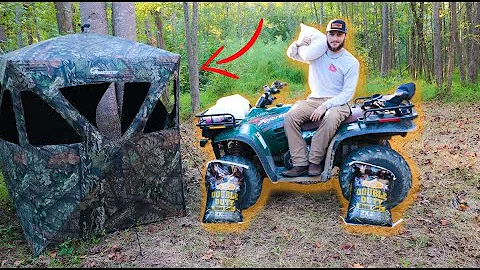Fixing Fuel Prime Issues in LB7 Duramax | Expert Guide
Table of Contents
- Introduction
- Troubleshooting the Fuel Prime Issue
- The Cause of Airlock and How to Fix It
- Inspecting the Fuel System for Leaks
- Identifying the Suspected Leakage Point
- Replacing the Damaged Tubing
- Cleaning the System and Conducting a Visual Inspection
- Putting the Engine Back Together
- Testing the Repair and Verifying Fuel Pressure
- Understanding the Fuel System Function
Introduction
In this article, we will discuss a common issue faced by owners of the LB7 Duramax, which is the loss of fuel prime when the truck sits idle for a period of time. We will go through the process of troubleshooting and repairing the problem step by step. This guide is designed to help you understand the causes of the issue and provide you with practical solutions to fix it.
🔎 Troubleshooting the Fuel Prime Issue
The first step in solving the fuel prime issue is to gather data using an HP tuner. By connecting the tuner, we can monitor the actual fuel pressure and desired fuel pressure while cranking the truck. If the fuel pressure is not reaching the desired level, it indicates that there is a problem with the fuel prime.
🔧 The Cause of Airlock and How to Fix It
Upon investigation, we find that there is air following the fuel slug towards the injection pump, causing the truck to shut off. This suggests that there may be a small air leak between the high-pressure injection pump and the rest of the truck. The most likely cause of this airlock is the fuel siphoning back to the tank when the engine is turned off, leading to a buildup of air in the system. To fix this, we need to identify and repair the source of the air leak.
🔍 Inspecting the Fuel System for Leaks
To locate the leak, we remove the upper engine cover and intake pipe to get a clear view of the fuel system. We notice wetness and fuel residue on a particular hose near the CP3 high-pressure injection pump. This indicates that the hose may be the source of the air leak. We also inspect the fuel bleeder screw and the surrounding area for any signs of leakage.
🔧 Identifying the Suspected Leakage Point
After a thorough inspection, we find that the suspect hose near the CP3 pump is in poor condition, with visible wear and tear. The clamp securing the hose also shows signs of wetness. This confirms our suspicion that this hose is the likely cause of the air leak. Replacing the damaged hose and applying new clamps should rectify the issue.
🛠️ Replacing the Damaged Tubing
We proceed to replace the worn-out hose with a fresh piece and install new crush washers on the fuel injector control module (FICM). Although we don't have the exact clamps we prefer, we believe that the ones available will suffice for now. It's essential to ensure that the entire system is airtight to prevent future fuel prime problems.
🧼 Cleaning the System and Conducting a Visual Inspection
Before reassembling the components, we clean the entire system using brake cleaner. This ensures that the system is dry and free from any contaminants. Afterward, we turn the key to let the lift pump run for about 30 minutes. This pressurizes the system, allowing us to visually inspect for any leaks. If no leaks are present, we proceed with reassembling the engine components.
🔧 Putting the Engine Back Together
With the system cleaned and inspected, we put the engine back together. We test the operability of the prime bleeder, ensuring that it is solid and holds the prime. All connections are secured, and the truck is left to sit for a couple of hours to verify that the fuel system remains airtight.
🔍 Testing the Repair and Verifying Fuel Pressure
After a few hours, we attempt a cold start to check if the repair successfully resolved the fuel prime issue. Using the HP tuner, we monitor the fuel pressure buildup. If the problem has been fixed, the truck should start without any difficulties. We record the fuel pressure data to confirm the success of our repair.
🔬 Understanding the Fuel System Function
Lastly, we provide a brief overview of how the fuel system works in early Duramax engines. We explain the path of fuel from the tank to the injection pump, highlighting the various components involved in the process. Understanding the fuel system's function helps to grasp the importance of maintaining an airtight system to prevent fuel prime problems.
🌟 Highlights
- Troubleshoot and repair fuel prime issues in LB7 Duramax
- Identify and inspect potential leakage points in the fuel system
- Replace damaged hoses and apply new clamps to ensure an airtight system
- Clean and visually inspect the system for leaks after repairs
- Test the repair by monitoring fuel pressure during a cold start
- Understand the fuel system's function to maintain optimal performance and prevent issues
📚 Resources:
🙋♂️ Frequently Asked Questions
Q: Why does my LB7 Duramax lose fuel prime when the truck sits idle?
A: The loss of fuel prime in LB7 Duramax trucks is often caused by a small air leak in the fuel system. When the engine is turned off, fuel can siphon back to the tank, allowing air to enter the system. This airlock prevents the proper buildup of fuel pressure, resulting in difficulty starting the truck.
Q: How can I identify the source of the air leak in the fuel system?
A: To identify the source of the air leak, inspect the fuel system components for wetness, fuel residue, or signs of deterioration. Pay close attention to hoses, clamps, and connections near the high-pressure injection pump (CP3) and the fuel injector control module (FICM).
Q: Is it necessary to replace the entire fuel system to resolve the fuel prime issue?
A: In most cases, replacing the specific hose or clamp causing the air leak should resolve the fuel prime issue. However, it is important to thoroughly inspect the entire fuel system for any other potential leaks to ensure its overall integrity.
Q: How can I prevent future fuel prime problems in my LB7 Duramax?
A: Regularly inspecting the fuel system for leaks, especially around hoses and connections, is crucial in preventing future fuel prime problems. Additionally, ensuring that all components are tightly secured and using quality clamps can help maintain an airtight system. Regular maintenance and replacing worn-out components as needed are also essential.







